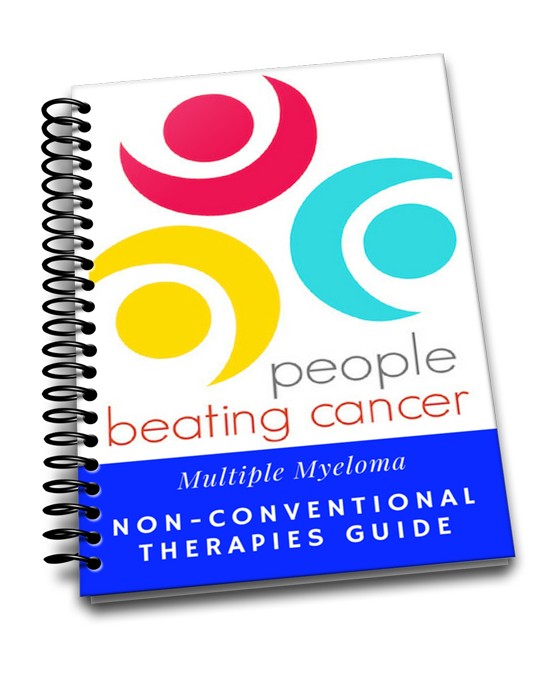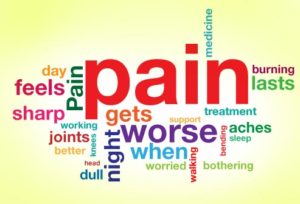
Recently Diagnosed or Relapsed? Stop Looking For a Miracle Cure, and Use Evidence-Based Therapies To Enhance Your Treatment and Prolong Your Remission
Multiple Myeloma an incurable disease, but I have spent the last 25 years in remission using a blend of conventional oncology and evidence-based nutrition, supplementation, and lifestyle therapies from peer-reviewed studies that your oncologist probably hasn't told you about.
Click the orange button to the right to learn more about what you can start doing today.
- You are here:
- Home »
- Blog »
- Multiple Myeloma »
- Multiple Myeloma Side Effects- Chemotherapy-Induced Nerve Damage
Multiple Myeloma Side Effects- Chemotherapy-Induced Nerve Damage

Acupuncture is an effective intervention for treating chemotherapy-induced peripheral neuropathy and improving patients’ quality of life and experience with neurotoxicity-related symptoms with longer term effects evident.”
It could have been the local radiation or it could have been Adriamycin. I’ll never know. But what I do know is that my leg strength slowly left me starting about a year after I completed my conventional, FDA approved, standard-of-care therapy for a diagnosis of multiple myeloma in early 1994. I’m still angry about those multiple myeloma therapies that did nothing to stop multiple myeloma but caused a host of short, long-term and late stage multiple myeloma side effects.
Including chemotherapy-induced nerve damage aka peripheral neuropathy.
According to research, more than 50% of cancer patients undergoing chemotherapy experience the side effect called chemotherapy-induced peripheral neuropathy (CIPN). Living with chronic pain is difficult. Those cancer patients who experience CIPN live with varing degrees of chronic pain. If you ask your oncologist about CIPN he/she will probably tell you that the pain might dissipate. Studies confirm that the pain might subside, it might remain the same or it might even get worse.
According to the study linked below, acupunture “is an effective intervention for treating chemotherapy-induced peripheral neuropathy and improving patients’ quality of life and experience with neurotoxicity-related symptoms with longer term effects evident.”
I have documented the benefit of acupuncture for cancer patients and survivors for side effects including:
- side effects management of ASCT
- management of dry mouth
- reduction of hot flashes caused by chemo
- relief of joint pain caused by chemo
And now I’m documenting the benefit of acupunture for one of the most painful side effects of all, CIPN.
To learn more about therapies for chemotherapy-induced peripheral neuropathy, scroll down the page, post a question or comment and I will reply to you ASAP.
Thank you,
David Emerson
- Cancer Survivor
- Cancer Coach
- Director PeopleBeatingCancer
Recommended Reading:
- Prevention of chemotherapy-induced peripheral neuropathy
- Financial Toxicity- Cancer Survivors Getting Medical Care
- End-of-Life Mind-Body Therapy for Advanced Cancer Patients
A Randomized Assessor-Blinded Wait-List-Controlled Trial to Assess the Effectiveness of Acupuncture in the Management of Chemotherapy-Induced Peripheral Neuropathy
“Purpose: Chemotherapy-induced peripheral neuropathy is a complex side effect with few available treatment options. The aim of the study was to test the effectiveness of an 8-week course of acupuncture in the management of chemotherapy-induced peripheral neuropathy in cancer patients who were receiving or had received neurotoxic chemotherapy.
Methods: Randomized assessor-blinded controlled trial with 2 arms; one arm received acupuncture twice weekly for 8 weeks, while the other arm was a wait-list control group receiving only standard care. Primary outcome was pain intensity and interference over the past week using the Brief Pain Inventory at the end of the intervention. Secondary outcomes included clinical assessment (CTCAE [Common Toxicity Criteria for Adverse Events] grading and Total Neuropathy Score–Clinical Version) and nerve conduction studies; and patient-reported outcome measures (Functional Assessment of Cancer Therapy–Gynecologic Oncology Group–Neurotoxicity Quality of Life scale and Symptom Distress Scale) assessed at baseline, end of treatment (8 weeks), week 14, and week 20 from the beginning of treatment.
Results: Eighty-seven patients were randomized to the experimental arm (n = 44) and to the standard care wait-list control arm (n = 43). Significant changes at 8 weeks were detected in relation to primary outcome (pain), the clinical neurological assessment, quality of life domains, and symptom distress . Improvements in pain interference, neurotoxicity-related symptoms, and functional aspects of quality of life were sustained in the 14-week assessment, as were physical and functional well-being at the 20-week assessment.
Conclusions: Acupuncture is an effective intervention for treating chemotherapy-induced peripheral neuropathy and improving patients’ quality of life and experience with neurotoxicity-related symptoms with longer term effects evident.”
Peripheral neuropathy in hematologic malignancies – Past, present and future
“Neurotoxic treatments (including proteasome inhibitors, immunomodulatory drugs and vinca-alkaloids) are often used in the treatment of hematologic malignancy. Peripheral neuropathy can be part of a paraneoplastic syndrome accompanying the disease but more commonly is a consequence of treatment with neurotoxic therapies, and produces sensory, motor, autonomic nerve dysfunction or a combination, leading to pain, loss of sensation and functional disability.
This review provides an update on peripheral neuropathy in hematologic malignancy, including risk factors, mechanisms and treatment options. We examine the clinical features and risk factors for peripheral neuropathy following bortezomib, thalidomide, brentuximab vedotin and vinca alkaloid treatment, as well as related compounds. We review the current data on pharmacogenetic risk factors for the development of toxicity and highlight areas of future research…”


